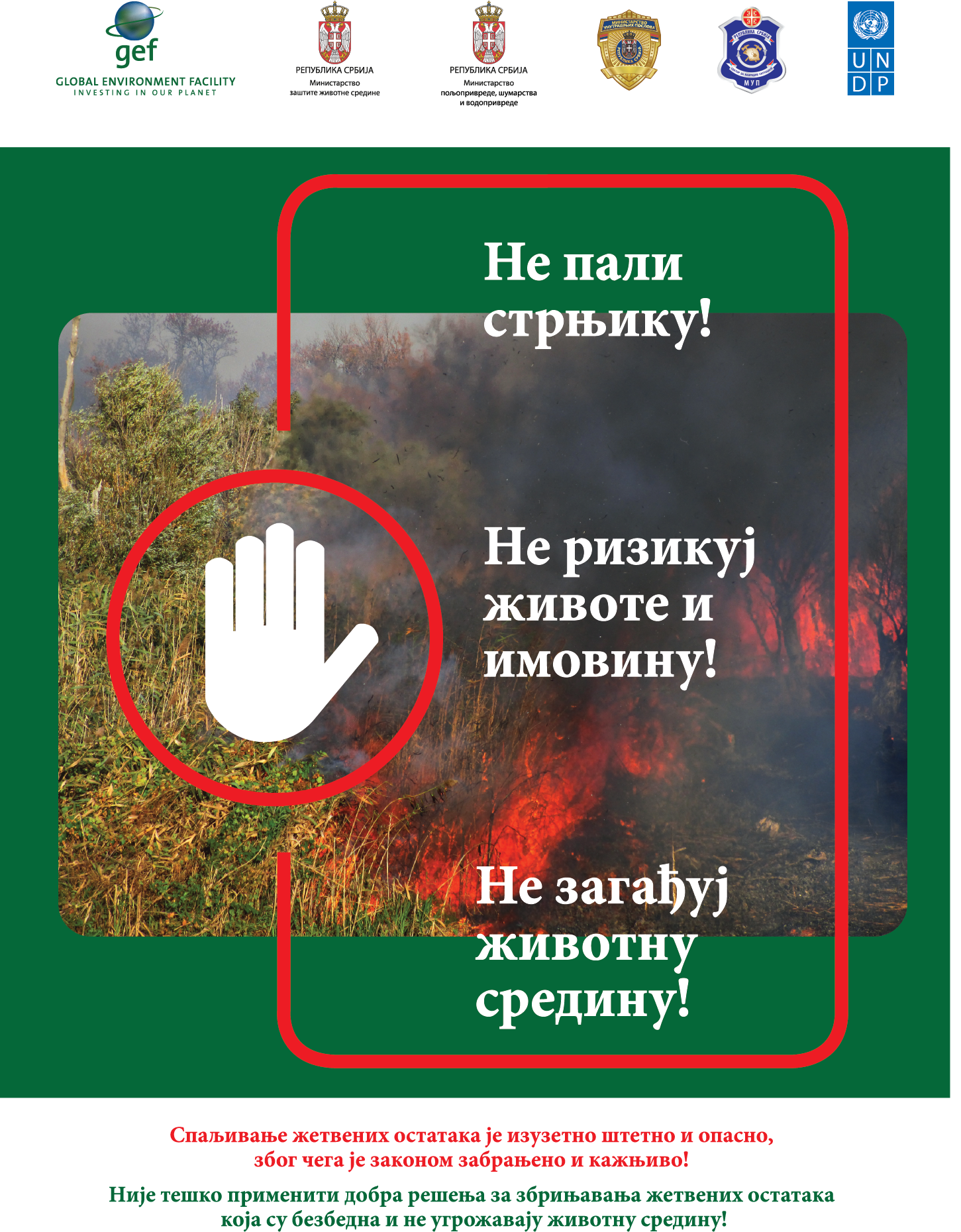The Ministry of Environmental Protection, the Ministry of Agriculture, Forestry and Water Management and the Ministry of the Interior have launched a campaign this year to raise awareness about the harmful consequences of burning crop residues in the open, which is prohibited by law. In this joint campaign, which is being implemented with the support of the Global Environment Facility (GEF) and the United Nations Development Programme (UNDP), promotional materials (video, leaflet) have been created with the aim of pointing out the existence of this problem and appealing to citizens not to burn the stubble as part of their agricultural activities.
Apart from being prohibited by law, this practice also poses a great danger to human safety and causes great damage to the environment. Last year (2019), firefighters had to intervene almost 19,000 times to suppress fires caused by burning stubble. On that occasion, huge material damage was created and 14 lives were lost. The most challenging period in front of the fire services is from September to November, because that is when most violations of this nature happen. That is when the corn harvest season ends and then the largest number of fires start and the fire services do not manage to intervene in all places. This practice, in addition to endangering human lives, causes great damage to the land itself. In the upper part of the soil, due to the fire, all microbiological processes are interrupted, but also most of the nutrients are lost. On that occasion, nitrogen is released into the atmosphere and the great damage is the loss of organic matter.
The Law on Agricultural Land regulates this area as well as offenses arising from the burning of stubble. Any burning of stubble is dangerous and therefore punishable by law for both individuals and legal entities.







